When was the last time you stayed up late watching a movie — or the season finale of your favorite series? What was the last book you found nearly impossible to put down?
Carefully-crafted suspense is what makes some cliffhangers effective while others leave the audience yawning and reaching for the next thing.
As you’ll see in the examples further down, plenty of authors, screenwriters, and video game creators have learned to capitalize on the power of suspense.
In this post, I’ll teach you how to do it too!
Ready?
Let’s dig in!
What is Suspense?
Look up the definition for suspense, and you’ll see references to feelings of excitement, dread, and mental uncertainty about what will happen.
Authors use suspense as a literary device to keep their readers hooked on the story.
It’s most effective when the uncertain outcome has to do with the hero or another important character. The more the reader cares, the more suspense they feel.
6 Types of Suspense (+ Examples)
Before we dive into the examples, you need to know the different types of suspense used in storytelling. Some you’ll use more often than others, depending on your chosen genre.
1. Narrative Suspense
With narrative suspense, the tension builds throughout the entire story, leading the reader closer and closer to a surprise that should be well worth the agony of waiting, wondering, and worrying from one chapter to the next.
The goal of narrative suspense is to keep the reader hooked from the beginning of your story throughout every twist and turn — and to reward your reader’s sustained attention with a satisfying payoff at the end.
Think of a slow-burn romance with one challenge after another but with an ending that’s totally worth all the pain and anguish your characters have gone through.
Narrative Suspense Examples: Jurassic Park (1993 Film) and Pride & Prejudice by Jane Austen
2. Short-term Suspense
Many stories use brief moments of tension to offer the first hint of the larger long-term suspense.
Think of the awkward first encounter between Daphne Bridgerton and Simon Bassett.
Other times, short-term tension serves more as a distraction or sets the tone for a subplot. Think, for example, of the brief but memorable encounters between Penelope Featherington and her friend (and secret crush), Colin Bridgerton.
Short-term Suspense Examples: Bridgerton by Julia Quinn
3. Romantic/Comedic Suspense
Think of any romantic drama that had “Will they or won’t they?” sexual tension between two of the characters. This is romantic suspense!
As a romance writer, you want your reader to feel the chemistry because it makes the mental uncertainty more compelling.
Comedy, when it fits, can lighten the mood and make the suspense less painful and more compelling.
Suspenseful Romantic Comedy Example: While You Were Sleeping (1995). Lucy saves the life of her crush and is mistaken for his fiancée. Meanwhile, she falls for his brother.
4. Cliffhangers
This subtype of short-term suspense deserves a category of its own. Fiction authors often use cliffhangers as literary devices at the end of each chapter to entice the reader to move right into the next chapter.
Screenwriters for movies and TV series use them at the end of each episode or every season to ensure their viewers hang tight for the next season’s premiere.
Even nonfiction authors use cliffhangers at the end of chapters to make their books harder to put down.
Cliffhanger Example: One Thousand and One Nights by Hanan Al-Shaykh (Retelling)
5. Mystery
Suspense and mystery are interrelated. Many well-known mystery stories have an element of suspense. But there is a key difference between the two:
- With mysteries, the major event (murder, robbery, etc.) happens at the beginning of the story and, later on, the protagonist identifies the culprit.
- With suspense, a major event or resolution is looming throughout the story but doesn’t happen until the end (or close to it).
Suspenseful Mystery Examples: Knives Out (2019 film) and And Then There Were None by Agatha Christie (novel, movie & miniseries)
6. Horror
Good horror stories are full of stomach-churning, nail-biting, genuine suspense. The reader knows something terrible is going to happen, but they don’t what or when, and they don’t know whether their favorite characters will survive. Horror authors are building suspense throughout the whole book (or film).
Graphic violence isn’t even necessary to get readers or viewers solidly hooked on the story, worrying and wondering how it will play out.
Horrific Suspense Examples: The Silence of the Lambs (1991) and A Quiet Place (2018)
More Suspense Examples (From TV, Film, Literature, & Video Games)
Now that you’re more familiar with the types of suspense you can use as an author, let’s dive into some well-known examples.
1. Horizon: Zero Dawn (Video Game)

Shunned by her own tribe and left to roam an earth hostile to humans, the main character, Aloy, investigates a mysterious crime against her people.
We don’t know, as players, whether Aloy will survive her encounters with robotic animals and other threats, which keeps us in suspense and drives us to keep playing.
2. Murder on the Orient Express (Literature & Film) – Agatha Christie
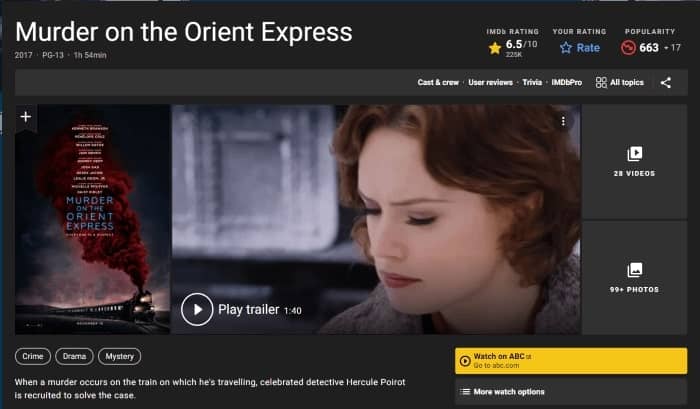
In this thriller novel, celebrated detective Hercule Poirot is called upon to investigate when a fellow train passenger turns up dead in his room, with the door locked from the inside.
In the beginning, we wonder who will end up dead. Then we wonder which of the other passengers is the killer — and whether Poirot can identify them before they kill again.
3. Othello (Literature/Play & Film)- William Shakespeare
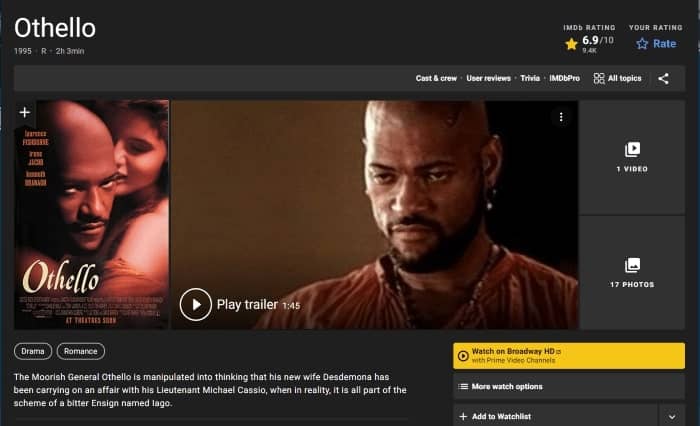
General Othello secretly marries the woman he loves (Desdemona). But his vengeful confidante Iago convinces him she’s unfaithful. So, we as the viewer don’t get to simply enjoy their triumph before Iago puts us in suspense over whether he’ll succeed in ruining it.
When Othello acts out of jealous rage, we’re horrified but not surprised. And because we want to see Iago pay for his treachery, the suspense carries us all the way to the end.
4. How to Get Away with Murder (TV Show) – Peter Nowalk: Creator
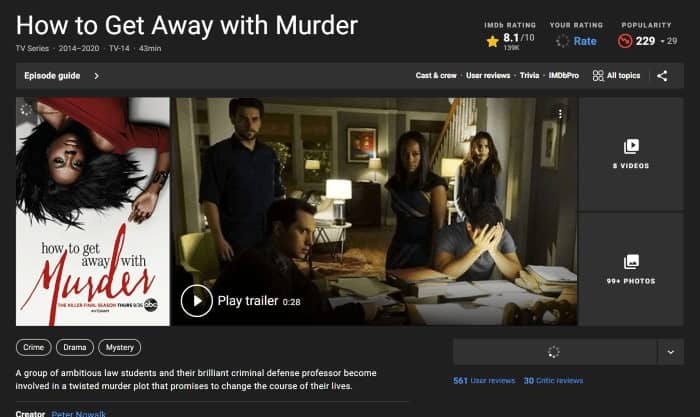
The main character, Professor Annalise Keating, teaches a class of aspiring lawyers and chooses a select group to work with her.
Over the course of six seasons, each focused on a particular murder, we see flashbacks of the incident-starting with one that reveals just enough to get us hooked.
The characters lead us closer to the truth bit by bit, keeping us in suspense from one cliffhanger to the next until the ultimate suspenseful moment — when we finally see how the murder happened — and what it leads to.
5. You (TV Series) – Sera Gamble and Greg Berlanti: Creators
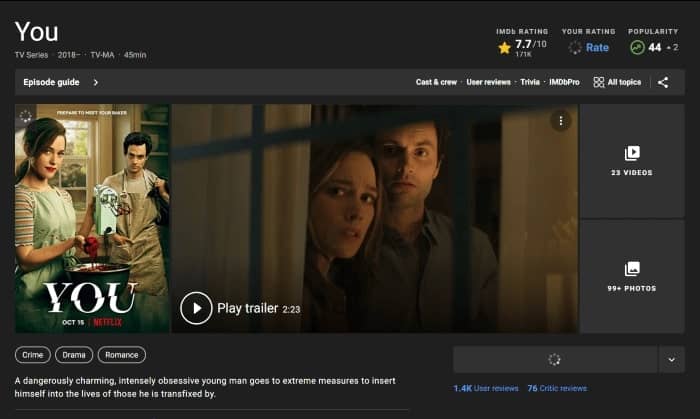
For Joe, a new threat is always looming. So, the suspense never really lets up. We get the sense, too, that Joe’s drastic actions will catch up with him. But we don’t know how, when, or by whom.
We get to hear his thoughts and witness his flashbacks, which are like breadcrumbs leading us closer to tragedy. And in spite of our moral compass, we feel compelled to root for him.
If he pays the ultimate price, we want his end to be worthy of an epic character.
6. Big Little Lies (Literature & TV Series) – Liane Moriarty
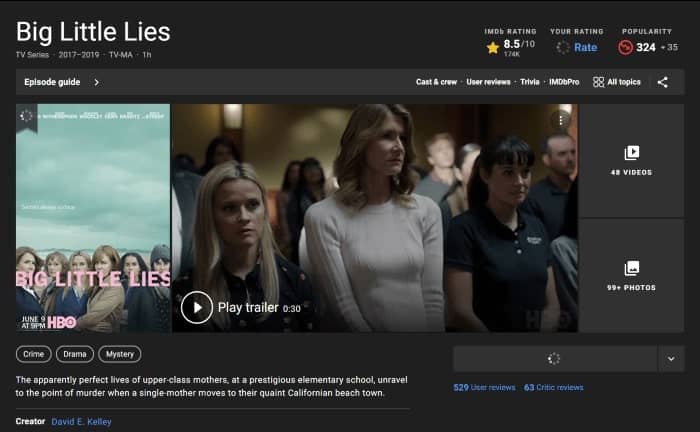
The story begins with videotaped testimony from parents in the neighborhood about a tragic accident that happened during a school function. Many of them suspect the main characters.
From there, we go back to the past and meet the women and their families. The more time we spend with them, the more details we learn that hint at the tragedy to come.
We know something terrible will happen to one of the characters, but we don’t know when or how, or who will be involved.
7. Bird Box (Literature & Film) – Josh Mailerman

The main character takes her two children on a dangerous trip to a place she believes will be safe for them — away from an unseen presence that’s driven most of society to suicide.
If they don’t keep their eyes closed and covered, they won’t survive, either.
We, as the viewer, are never sure they’ll all make it to their destination, so we’re on the edge of our seats, knowing the stakes and feeling the danger drawing nearer.
8. Little Fires Everywhere (Literature & TV Mini-Series) – Celeste Ng
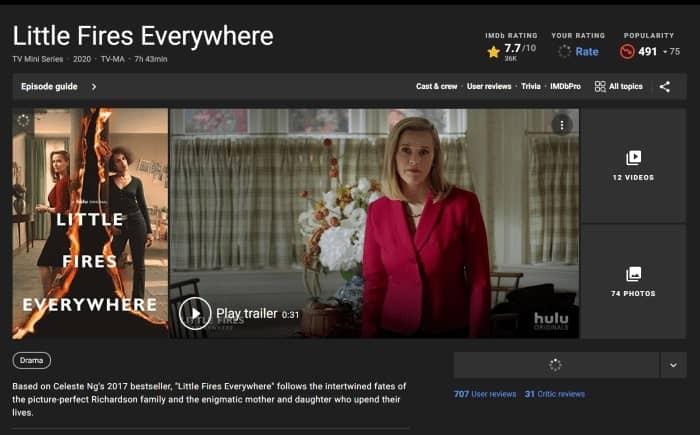
The tension builds from the moment the two mothers meet. And it escalates when a third mother-who gave up her child in a moment of desperation-enters the mix.
We know the tentative peace between the main adult characters is bound to fall apart in spectacular fashion, but we don’t know when or what will happen as a consequence.
We get the feeling both mothers are keeping life-shattering secrets that will eventually come out. The suspense keeps growing as we get closer to that moment.
9. Misery (Literature & Film) – Stephen King
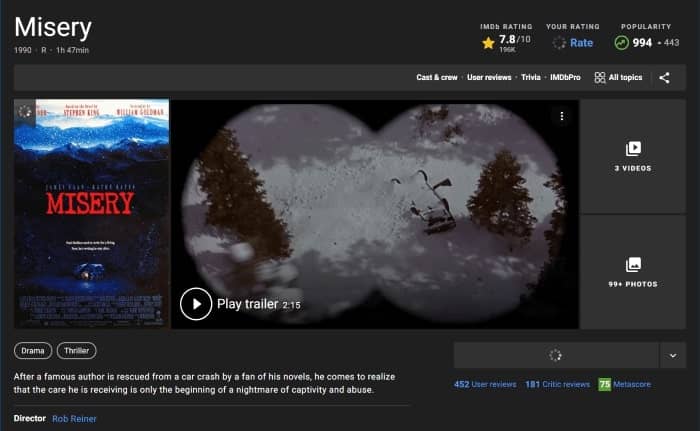
Famous author Paul Sheldon is rescued from a car crash by his “number one fan,” Annie Wilkes, and taken to her home to recover. It isn’t long, though, before he realizes she has no intention of letting him leave.
The suspense ramps up when she moves from one drastic measure to the next to keep her guest hidden — and dependent on her.
We know he’s got a plan to escape. And we watch in tense expectation to see if he’ll succeed.
10. The Da Vinci Code (Literature & Film) – Dan Brown
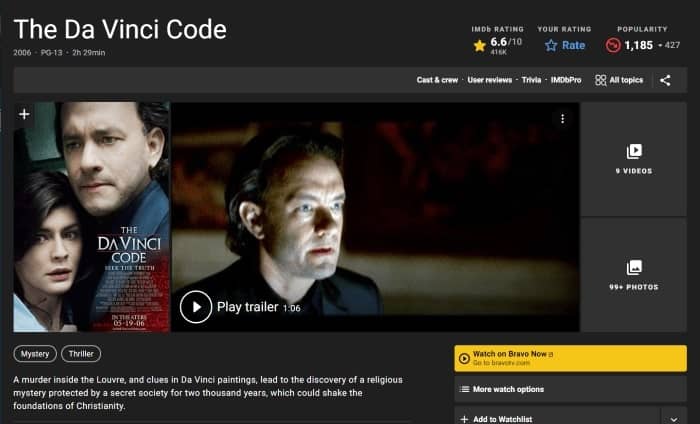
While investigating a murder at the L’ouvre, Robert Langdon discovers a religious mystery hidden by a secret society for two thousand years.
As he digs deeper and learns more, he becomes a target himself.
The stakes are high, which creates palpable tension and a sense of imminent danger for Langdon and his partner. And the suspense doesn’t let up until the end.
11. The Haunting of Bly Manor (TV Mini-Series) – Mike Flanagan: Creator
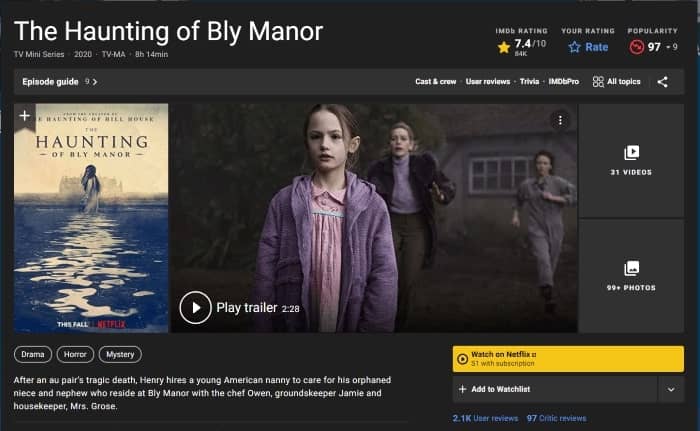
An American au pair with a secret goes to England to care for two orphaned children. The more she learns about the manor’s history, the more the danger around them grows.
We see enough, as the viewer, to know something bad is going to happen. We know, even before we learn all the details, that something bad has already happened.
What we don’t know is what will happen next — or who will pay the heaviest price.
How to Create Suspense
While you can definitely pick up some tips from the examples listed above, the following steps will give you a distinct advantage when it comes to writing suspense into your stories. Your readers will love you for it.
1. Start by making your audience uncomfortable.
Get your reader in suspense as early as possible. Create an atmosphere of dread or anticipation and show at least a hint of what’s at stake for the characters. Use sensory words to amp up emotion and give a visceral experience!
2. Make some big, lasting promises.
Create expectations in your readers by making promises that the main character will fulfill by the end of the story. Give them a reason to trust, too, that the main character will do whatever it takes to keep those promises.
3. Use foreshadowing and allusion to highlight important elements.
Keep dropping hints along the way with foreshadowing and allusions to get the reader thinking about what could happen. When they get to the crucial moment, you want them to remember those clues.
4. Keep the story simple.
Too many subplots drown the main story and the suspense you’re trying to build. That said, adding parallel viewpoints can help reinforce the suspense by showing another side of it, thereby raising the stakes.
5. Tell your reader something the hero doesn’t know.
Give them some pieces of the puzzle that the protagonist doesn’t have yet. And invite them to guess as to what’s going to happen and how and by whom. Show your reader the danger, and keep your character in the dark.
6. Withhold information.
In a way that lets the audience know there’s something just outside their awareness that is critically important to the fate of the protagonist (and other characters). One way to do this is to give your characters secrets.
7. Keep your audience hooked with danger and cliffhangers.
Putting the main character in some kind of danger is a surefire way to keep your reader in a state of agitation and suspense until the danger has passed. Punctuate your story with short-term suspense to keep the reader interested.
Suspense Examples…And Beyond!
How do you keep readers on the edge of their seats, open book in hand, until you lead them to the end they know is coming?
Suspense.
That’s how.
So put your protagonist in an impossible situation they’ll conquer just in the nick of time.
Or create tension and conflict with thrilling cliffhangers or mind-blowing mysteries.
Use these writing tips and examples to get inspired, and spin a suspenseful story that’ll have your readers dying for more.
Are you ready to do this?
I need to know… because the suspense is killing me!




